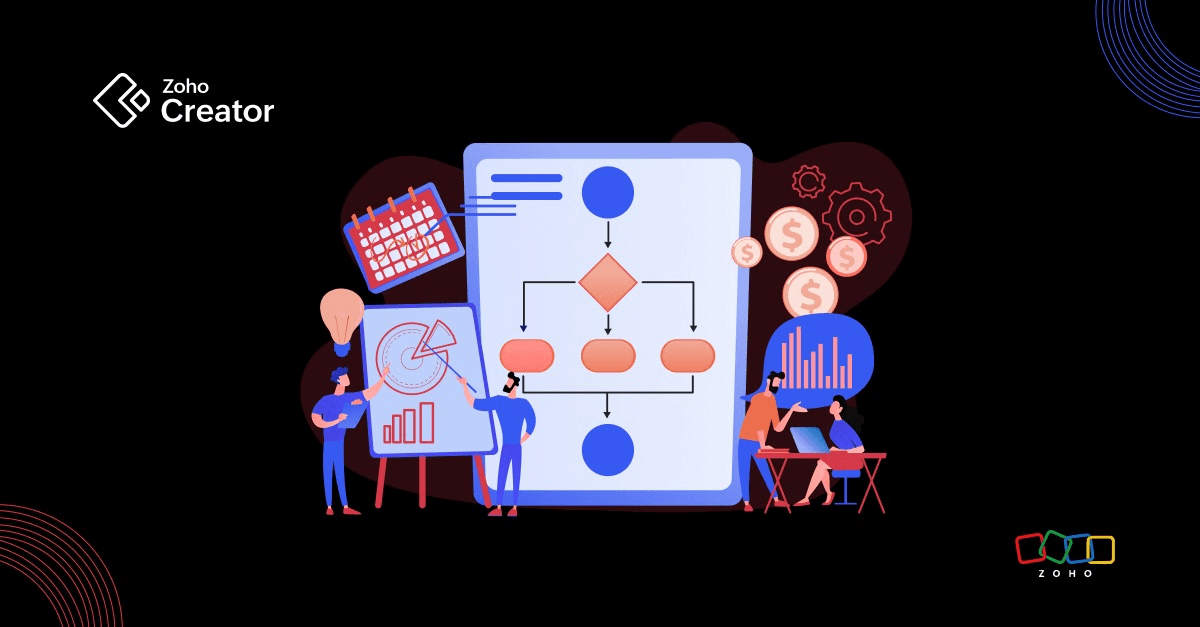- HOME
- Know Your Tech
- Digital Transformation: What, Why, Who, Where and How
Digital Transformation: What, Why, Who, Where and How
- Last Updated : April 20, 2023
- 866 Views
- 8 Min Read

Digital transformation (DX) is a flexible term, taking on different meanings depending on the context. Some might see it as going paperless by moving their business processes onto digital applications; others might consider it to be deploying AI and analytics to drive better decision-making; still others might point to the tools needed for workforce enablement in the hybrid office.
They're all kind of right; DX is each of those things, and a lot more. Broadly, Digital transformation is about using technology to improve the performance of enterprises dramatically and widen their reach. It requires organizations to rethink how they can use technology to meet and exceed customer expectations. Conversely, it can help companies identify new revenue streams by modifying existing processes or introducing new business models.
But above all else, DX is a strategic journey that requires cross-departmental collaboration. From employee and customer experience to operations and leadership, DX will touch every aspect of how a business runs.
What does digital transformation look like in practice?
"Using technology to improve performance" sounds broad enough that you may be having a hard time imagining what an actual digital transformation initiative would look like in practice. Here are a few examples:
Supply chain and logistics: an online retailer that automates order fulfillment, warehouse management, or shipping by moving analog processes over to digital ones
Internal processes: a sales team that implements advanced predictive analytics to target only the leads that are most likely to convert
Ecommerce: a brick-and-mortar retailer that builds out a new ecommerce interface for curbside pickup of online purchases
Marketing: a marketing team that builds out a strategy for producing more digital content (podcasts, videos, interactive content)
Internal infrastructure: an IT team that uses a custom solution to manage how company devices are networked together, which devices are distributed, how security is handled, etc.
A digital transformation initiative can include strategies from any or all of these categories, along with other possibilities. It's important to ensure everyone who will be working on the project (and the people who have authorized it) are aware that it isn't "just" ecommerce or social media. It's about recreating processes from the ground up, using technology to improve customer and employee experiences, and modernizing the business as a whole.
Why is digital transformation worth it?
Now that you have a clearer idea of what digital transformation can entail, let's go over why companies pursue these initiatives. A 2016 survey showed that the top three drivers of digital transformation were:
Growth opportunities in new markets
Evolving customer behaviors and preferences
Increased competitive pressure
Other popular reasons included new regulatory and compliance standards and evolving employee behaviors and preferences. These are all good reasons to invest in digital transformation. But now, there's also the COVID-19 pandemic and its effect on consumer behaviors.
A common throughline is customer experience. Digital transformation is one way to meet your customers where they're at and give them the experience they're accustomed to. With more ecommerce options than ever, businesses need to offer a high-quality digital experience to stay competitive. Of course, digital transformation doesn't end at ecommerce, but that's an important part of it. Improving customer experience in general can boost your bottom line, and digital transformation is no exception to that rule.
Who: The people critical to the success of your DX
The success of digital transformation often depends upon the team tasked with its implementation. And while developers and engineers are a given, it's equally imperative to have people who can work cross-departmentally while championing the project. With that in mind, there are at least 6 distinct roles that should be considered. Here's our list:
1. The digital transformation lead
With their mix of technical and business expertise, the DX lead is key to bringing both sides to the table. This person needs a deep understanding of both the business and technology strategy, and should essentially be a subject matter expert on the function or process that's being changed. By working closely with IT and leaders in other departments, this person can serve as the voice of the company, someone who can identify business problems, spot opportunities for change, and articulate the value the transformation can bring. With this information in hand, they can propose technological solutions that align with larger strategic goals.
2. The DX evangelists
The evangelist will help bring the enthusiasm and organizational know-how to bring all relevant parties into the project. This member of the team embraces change, and must be able to pivot and adapt quickly. Tasked with marketing and selling the powers of digital transformation, the best evangelists bring a positive attitude that invites (and energizes) employees at every level of a company. Good communication skills are key to generating excitement for the transformation by both employees and customers.
3. The technical engineers
Once the initiative has been set into motion, it's time for the technologists to step in. Not only are they responsible for understanding and (leveraging) today's technology stack, they must be able to envision tomorrow's as well. Their deep expertise in IT architecture should be accompanied by familiarity with the various applications, products and services potentially available to serve as solutions, and the vendors who can most effectively provide them. Critically, they also determine the technical viability of a digital transformation project.
4. The finance folks
Successful digital transformations rarely come from a single step, or on a scheduled date; they often become moving targets, with outcomes that may not be immediately visible. This is why it is all the more important that your team include an analyst who can make the business case for the transformation, and secure additional funding as needed. Their job is to articulate the ROI, along with the hard and soft benefits and accountability matrix that will be used to track and measure success.
5. The implementation lead
These are the people that oversee digital transformation via the implementation of technological and process changes. On the technical side, they will preform (or oversee) the installation of new technologies, while the process lead focuses on managing the changes that result from the implementation. Both sides work to ensure that the solutions prove friendly to the end-user.
6. Security, compliance, and white hat hackers
While likely a major consideration already, digital transformation provides a great opportunity to bring even more of these specialists (and best practices) into the fold. But bring them on early; when included too late, they may be forced to stop everything if anything is non-compliant. From technology and data architecture to applications and the processes accompanying them, this team also helps ensure that the outcomes of the transformation are secure and compliant. White hat hackers work hard to break things fast and help (others) fix them even faster. The additional QA this brings to the process guarantees the implementation is functional and meets the project's established targets.
How to get started with digital transformation
Before you start implementing new ideas, you need to assess the current state of digital projects at your company. This is necessary to lay the groundwork for a successful digital transformation; it lets you create a clearer path forward, as well as a plan to prevent any disruptions to crucial processes (customer service, order acceptance and fulfillment, and so on).
The specifics of the assessment process will vary from company to company, but it usually looks something like this:
Researching and thoroughly documenting current processes and technology stacks
Defining concrete pain points to solve, by talking to existing customers and employees, as well as looking through any customer/employee feedback available
Looking for any areas where changing the current processes or technology could interrupt important processes, so you can make contingency plans to prevent any interruption
After assessing the current state of things, it's time to start getting buy-in—both from your team and higher-ups. If the directive to work on this strategy has come from the top down, then your job is much easier. However, if this is a project proposal of your own, you'll want to create a top-level plan that includes budget, team resources needed, and any other important factors, to get buy-in. Backing up your plan with case studies of other companies who have successfully completed similar strategies and statistics relevant to your industry and project can help you get approval.
When it comes to your team members, it's important that they feel some level of ownership about the project. Pulling them in on the process early and getting their input on which parts of the project they're most interested in working on can make the entire team more interested and motivated. Make sure that everyone is clear on what their role will be, whether it's tracking important KPIs, focusing on logistics, or monitoring data on customer sentiment.
From there, you'll want to identify gaps between the current state of things and the vision for the future. Go back over the pain points you've listed previously, and work backwards from them to create a plan to fix them. If it helps, you can break things down into the categories of people, process, technology, and content, with the pain points you'd like to fix and improvements you'd like to make for each category.
Then, build the roadmap. This is different from a top-level plan, like the one you likely used to get buy-in from management or team members, in that you're listing specific day-to-day tasks to bridge the gap between where you are now and where you want to be. If you have the flexibility to do so, it's a good idea to prioritize smaller projects and tasks that can be completed quickly—being able to show successes early on can keep everyone committed and motivated about the project.
Obviously, the "how" of digital transformation could be a whole article in and of itself, but that should be enough to start planning further.
Questions to ask before you embark on your digital transformation project
Every DX initiative should start from a problem statement or with a question. It's vital that you take into account some of the ways that this will change your business, and the steps needed to get there. While this list is by no means exhaustive, it might prove a good jumping off point as you start planning:
Is the digital transformation strategy holistic?
Is it aligned with business priorities?
What are the potential roadblocks or bottlenecks?
How agile is our approach?
Do we have a clear view of emerging threats in our sector? Is the digital transformation addressing them?
How will we know if the strategy is working?
Are we being too conservative in scale or scope?
Are we being too ambitious in scale or scope?
What's our ideal timeframe, and how realistic is it?
Do we have someone internal that understands the implication of digital business ventures and technology well enough to provide guidance to the project?
Do people outside of the team handling the digital transformation know what's happening, specifically what the project entails, and how it will affect their role or work?
It's time to get started
Hopefully, this guide has given you a better understanding of what DX looks like and why to pursue it. DX often requires a large investment of time and money, which is why you need to plan well to set yourself up for success. That includes:
At the heart of all of this should be a good plan and a strong team. By taking that foundation and building on it by leveraging technology to improve processes, you can cut costs and add new revenue streams, all while readying your business for the future.
 Emily Sloan-Pace
Emily Sloan-PaceSince 2015, Emily has served as Zoho's Professor in Residence, creating content marketing and brand-level storytelling. Emily has also worked extensively on continuing education programs for Zoho Employees. In her previous life, Emily taught Shakespeare to audiences ranging from students in college to inmates in prison. She holds graduate degrees in both Literature and the Humanities.



